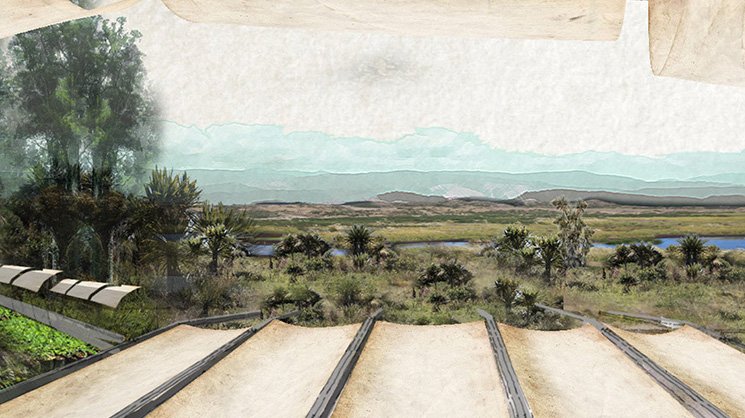Settling Regional Landscapes

20 March 2015
Description
As cities in New Zealand and around the world rapidly expand, there is a corresponding pressure on their surrounding regions as developers look to expand the city limits; farmers look to increase productivity; indigenous people look to defend their cultural integrity; tourists look for environmental gratification; and lifestyle residents look for their piece of paradise. These regions are often stunning natural landscapes that are being degraded environmentally and disconnected from each other. What are the compelling alternatives to this trend?
We know that strong connections are vital to a resilient framework. So how might architecture and landscape connect these entities to each other; to the city; to the landscape; and to a broader cultural project?
What connections could be made through interventions in the landscape?
What connections could be made with architectural interventions?
How might these interventions project new architectures, new landscapes and new regions?
Range of topics and research questions students might consider
Students will be encouraged to explore their discipline by developing design proposals, subjecting them to rigorous critique and exploring alternatives in a highly iterative process. During the design intensive you will quickly develop the design of a building, landscape, or interior and begin the iterative process. Through iterations you will identify questions, not only for the project but also for the discipline.
We expect a strong commitment to landscape / urban systems and formal interventions, a critical view of predominant types and a lateral vision of hypothetical futures.
Landscape students are encouraged to investigate the ways we have settled rural areas and rural towns in the area. Architecture and Interior students are encouraged to consider temporary or permanent housing as a component of any programme. Possible other programmes include educational institutions; health facilities; civic buildings; cultural centres; public pools; research centres; entertainment centres etc. Interior students should have identified a suitable existing building as part of their site.
A number of projects have come through to us as potential masters projects in 2015. We have about half a dozen collaborative projects with Wellington City Council, Kapiti Coast District Council and Wellington Regional Emergency Management Office (WREMO) for architects and landscape architects.
These are exciting multidisciplinary, multiscalar design research projects that are likely to be ground-breaking, either as implemented projects in the near future or influencing government policy in some way. If you are unsure of your proposal this may be a way to lock something in.
Available supervisors: Martin Bryant, Bruno Marques, Sam Kebbell, Penny Allan
